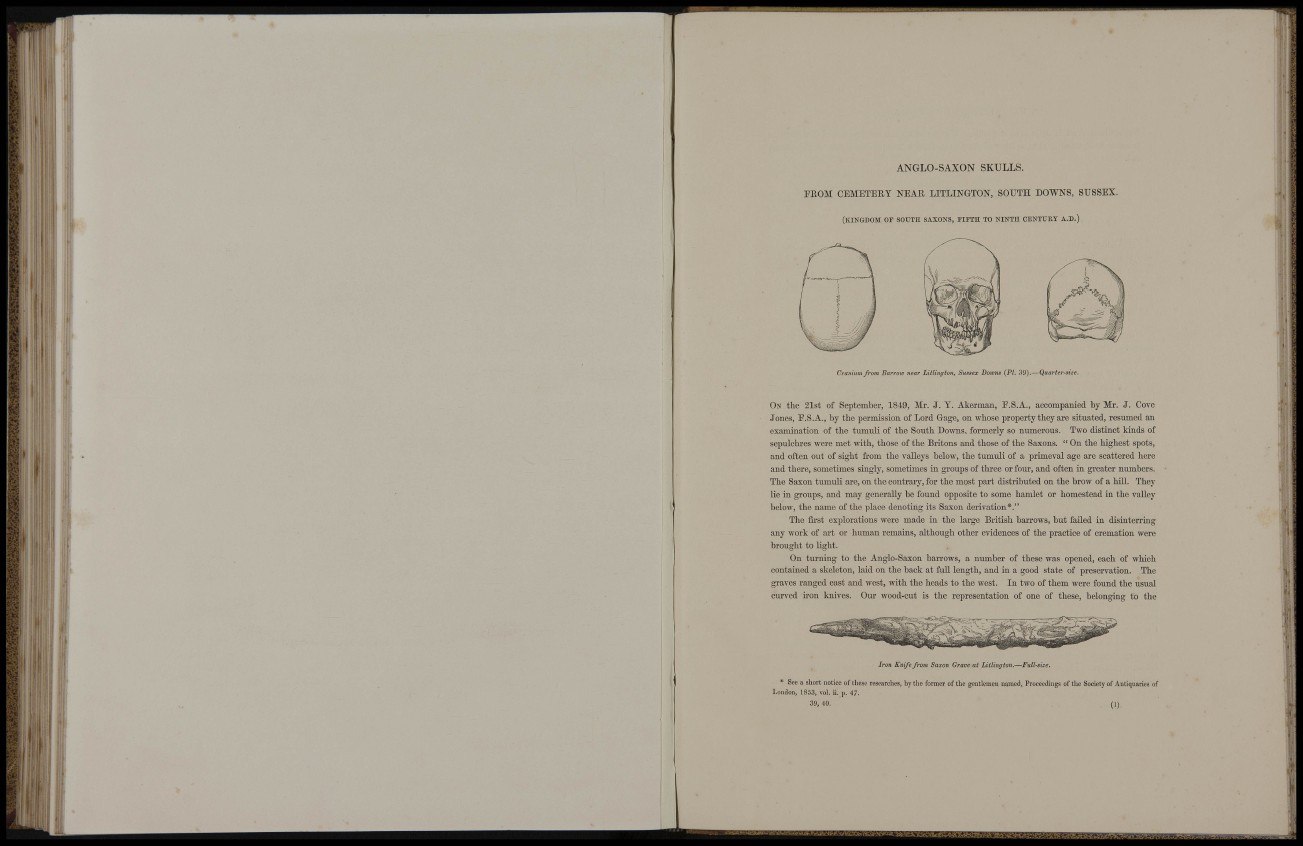
m
mi
H;
• Ilri'i
m
A N G L O - S A X O N SKULLS.
FEOM CEMETERY NEAR LITLINGTON, SOUTH DOWNS, SUSSEX.
(KINGDOM OF SOUTH SAXONS, FIFTH TO NINTH CENTUUT A.B.)
Cranuimfrom Barrow near Litliyigton, Sussex Downs {PL 39).—Quarter-size.
ON tlie 21st of September, 1849, Mr. J. Y. Aierman, P.S.A., acoompanied by Mr. J. Cove
Jones, E.S.A., by the permission of Lord Gage, on whose property they are situated, resumed an
examination of the tumuli of the South Downs, formerly so numerous. Two distinct kinds of
sepulchres were met with, those of the Britons and those of the Saxons. " On the highest spots,
and often out of sight from the valleys below, the tumuli of a primeval age are scattered here
and there, sometimes singly, sometimes in groups of three or four, and often in greater numbers.
The Saxon tumuli are, on the contrary, for the most part distributed on the brow of a hUl. They
lie in groups, and may generally be found opposite to some hamlet or homestead in the valley
below, the name of the place denoting its Saxon derivation*."
The first explorations were made in the large British barrows, but failed in disinterring
any work of art or human remains, although other evidences of the practice of cremation were
brought to light.
On turning to the Anglo-Saxon barrows, a number of these was opened, each of which
contained a skeleton, laid on the back at full length, and in a good state of preservation. The
graves ranged east and west, with the heads to the west. In two of them were found the usual
curved iron knives. Our wood-cut is the representation of one of these, belonging to the
Iron Knife from Saxon Grave at Litlington.—Full-size.
* See a short notice of tliese researches, by the former of the gentlemen named. Proceedings of the Society of Antiquaries of
London, 1853, vol. ii. ¡i. 47.
39, 40, (1)
I I?I
fmrnj^sm